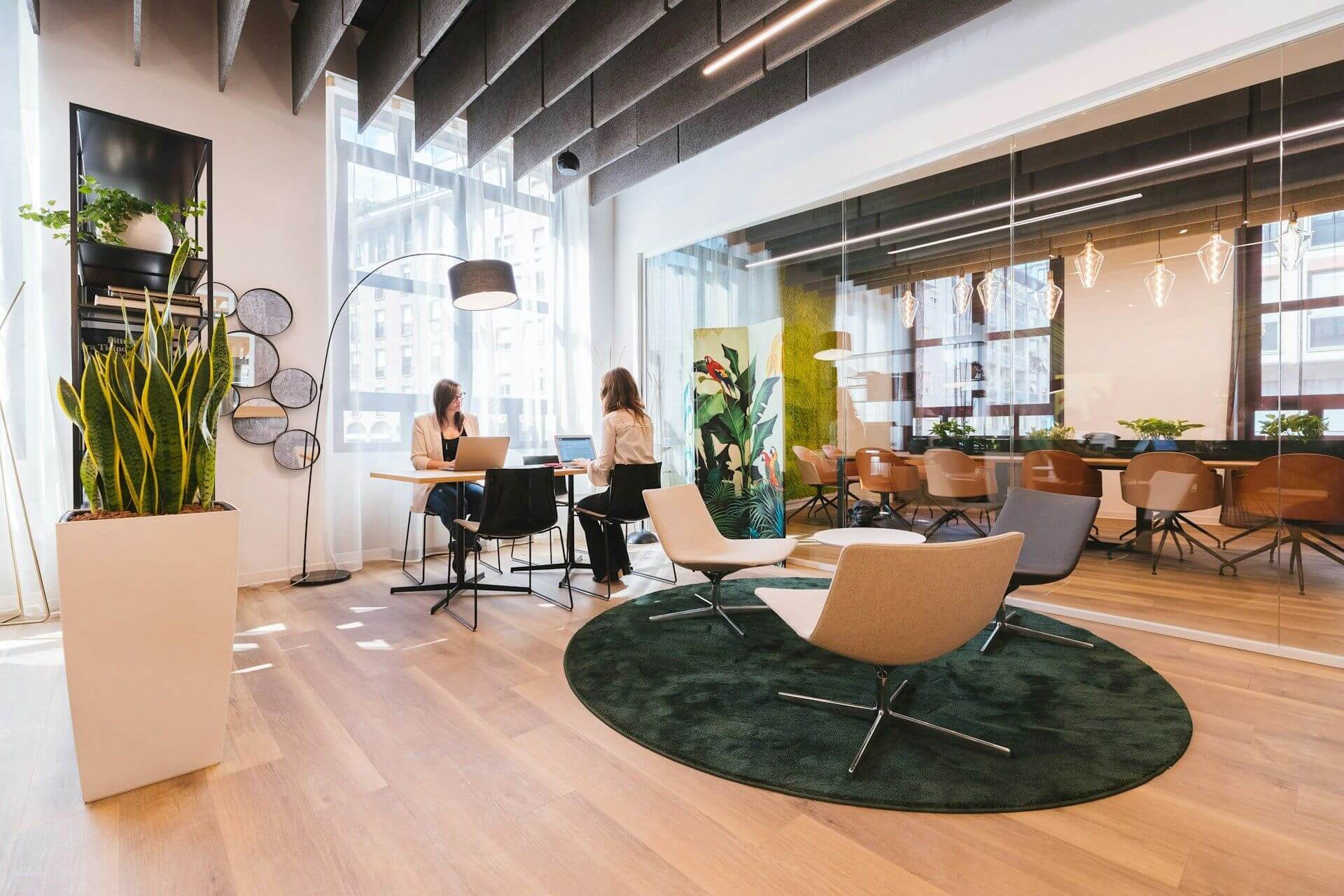Designing for Wellness: How Office Spaces Can Support Women’s Mental and Physical Health

Did you know the design of your workplace can have a significant impact on your wellbeing?
It’s true. A well-designed office space can help you to feel calm, relaxed and productive, whilst a poorly designed office can make you feel stressed, anxious and overwhelmed. We spend most of our time at work, so it’s important to feel comfortable.
This is why having a wellness-focused office is crucial. With the right design, planned by skilled commercial office interior designers, you can create a space where you love to be.
In this article, we’re exploring how incorporating wellness-centered design elements like natural lighting, ergonomic furniture, and quiet zones can create a healthier, more supportive environment for women at work.
Key Elements of Wellness-Focused Office Design
Natural Lighting
Natural light in the workplace is linked to numerous benefits, including better sleep, reduced eye strain, and improved mood. Maximising natural light can be achieved by incorporating open spaces that allow light to flow freely and positioning workstations near windows. For offices where natural light is limited, installing lighting that mimics natural light can also help maintain the circadian rhythms of employees, promoting better sleep patterns and overall health.
Ergonomic Furniture
Ergonomic furniture is designed to support the body comfortably during work hours, preventing strain and injury. For women, adjustable chairs and desks that cater to various body types and sizes are crucial. Ergonomic accessories like keyboard trays and monitor stands can help create a comfortable, injury-free work environment.
Quiet Zones and Private Spaces
Quiet zones and private spaces are essential for reducing noise-related stress and supporting focused work. These areas provide employees with a place to retreat when they need to concentrate or take a moment for themselves. For women, having access to private spaces can be particularly important. Designing these areas to be easily accessible and comfortably furnished can make a significant difference in employee well-being.
Greenery
Having plants in your office has been shown to boost mood, reduce stress, and improve cognitive function. Indoor plants, green walls, and views of the outdoors can help create a more relaxed and refreshing work environment. This sense of nature can provide a mental health boost, making your employees feel more energised and less stressed throughout the workday.
Inclusive Design
A wellness-focused office design should also be inclusive, accommodating the diverse needs of all employees. This means considering features that support women in different life stages, such as private rooms for new mothers. It’s also about ensuring the office layout accommodates various working styles. By engaging employees in the design process, businesses can create spaces that meet the needs of their workforce.
Implementing Wellness-Focused Design in Your Office
Creating a wellness-focused office doesn’t have to be a daunting task. Start by assessing the current office environment and identifying areas for improvement. Simple changes, like adjusting lighting or introducing more plants, can make a significant impact.
For larger redesigns, consider consulting with design professionals who specialise in wellness-oriented spaces. Remember, the goal is to create an environment that supports the health and well-being of all employees, with a focus on the needs of women in the workplace.
Conclusion
Designing office spaces with a focus on wellness can improve the mental and physical health of employees, particularly women. Through creating wellness-focused office spaces, businesses can create healthier, more supportive environments where women can thrive.

